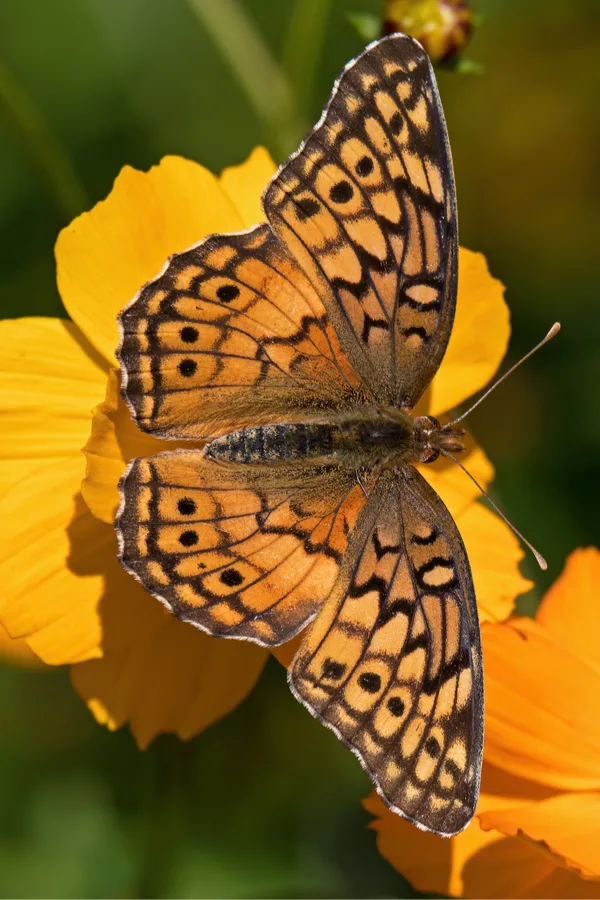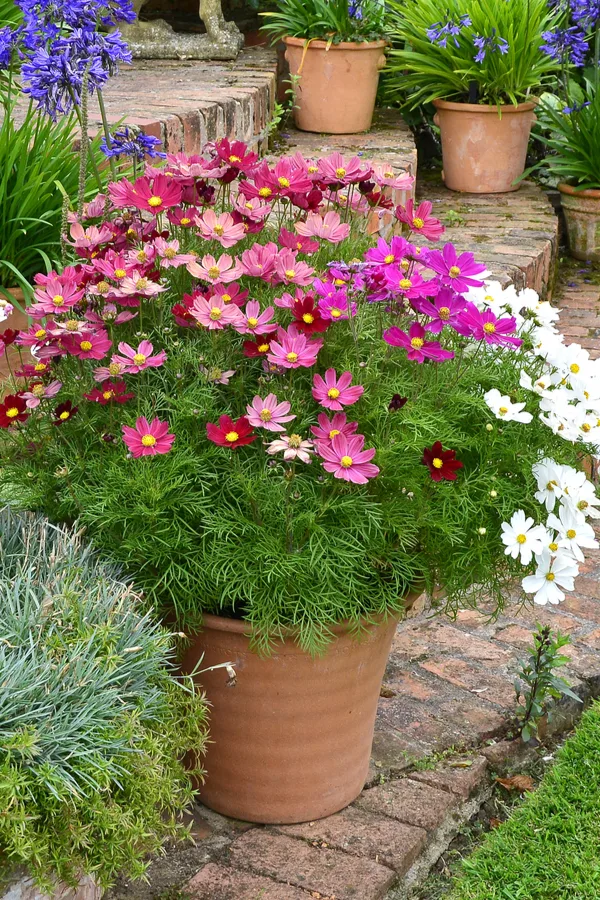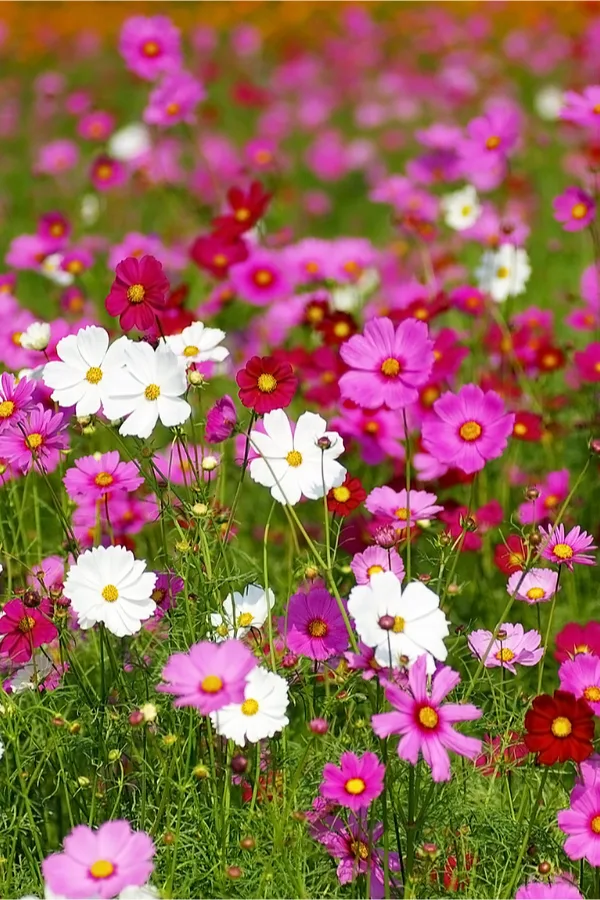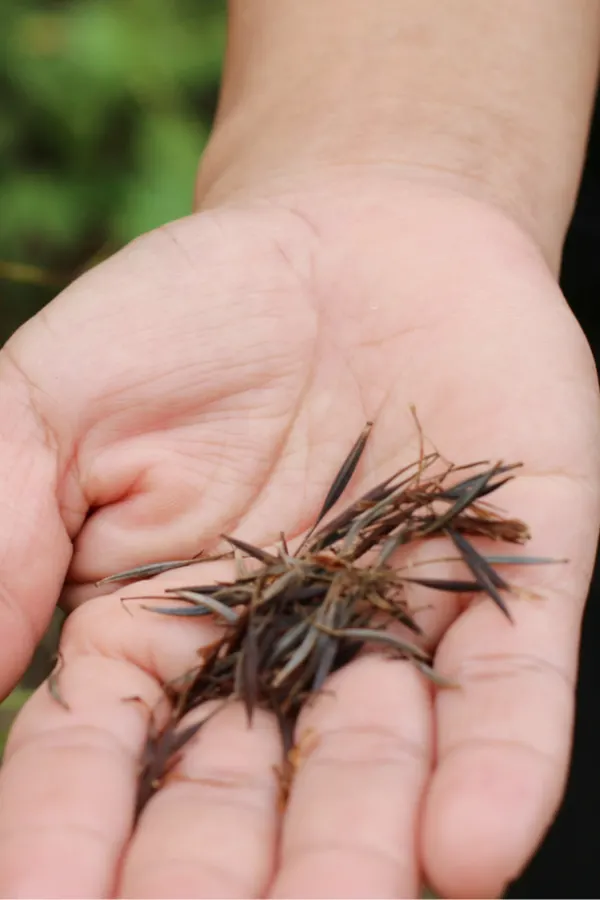Planting and growing cosmos are one of the easiest ways to provide gorgeous color and interest to your flowerbeds and container plants – from early summer, right up until the first frost!
Cosmos are an annual flower that are not only easy to grow from seed, but require little in-season maintenance. With soft radiating blooms that seem to float on fern-like foliage, they are a sight to behold.
Cosmos are available in varieties growing from 12″ to 16 inches, all the way up to 5 feet in height. And in a whole slew of colors and bloom styles!
Both drought and heat resistant, the plants hold up well to the rigors of summer. Even better, they tend to be overlooked by deer and other wildlife in search of food, making them an excellent choice for planting in flowerbeds or containers.

But although wildlife doesn’t seem to have an interest, pollinators do. In fact, cosmos are one of the best flowers to grow for attracting butterflies, bees and other key pollinators to your landscape.
Here is a look at how to plant, grow and maintain cosmos, along with some key tips on getting them to bloom longer and stronger than ever.
Planting & Growing – Growing Cosmos
Although cosmos can be started from seed indoors, they grow easily when directly seeded into the landscape. And do they ever mature and develop fast! In fact, it takes just seven to eight weeks for plants to go from seed to flower.

When growing from seed, allow the soil to warm before planting. You can begin sowing seeds as soon as the threat of frost has passed. Allowing the soil to warm to at least 60 degrees will allow seeds to germinate much more rapidly.
There is little need to amend most soil types with additional nutrients or compost. Cosmos will grow and adapt in nearly any soil type, but actually prefer to have soil that is not overly fertile. In fact, too many nutrients will hinder bloom cycles and flower density.
Seeding – Growing Cosmos
For most varieties of cosmos, space seeds around 12 to 18 inches apart when planting. Plant seeds shallow in the soil around 1/4″ inch deep. Cover seeds and water lightly.
It’s best to plant a few seeds in each planting zone to ensure good germination. Once seeds have sprouted, they can be thinned back to one seedling per area.

There are some varieties that will grow nearly 3 feet in width. With that in mind, always check the back of seed packets for exact spacing info.
If growing to plant in containers in pots, select a smaller or dwarf variety such as Ladybird Cosmos for best results. Seeds can be sown indoors for pots four to six weeks prior to last frost to develop larger transplants.
Seeds for container plants can be seeded directly, but transplants will develop faster color for display.
Watering – Growing Cosmos
Cosmos are an extremely drought and heat tolerant plant. Water seeds and seedlings to help germinate, but do not over water. Once plants develop in flowerbed spaces, watering is rarely a concern as they can handle long periods of drought well.
For pots and container plants, water deeply, but allow the pots to dry out between watering. Again, too much water is more harmful to plants than not enough.
It is a good idea to mulch plants to help keep competing weeds at bay. When mulching, keep a few inches around each stem clear to keep the plant stem from becoming overly moist.

For larger varieties of cosmos growing in flowerbeds, staking may be necessary as plants mature. Larger plants tend to topple over from their own weight as the season progresses without additional support.
How To Keep Your Cosmos Blooming – Growing Cosmos
Cosmos will bloom constantly from late spring until fall if given just the slightest bit of care. Most important of all for continuous blooming is the practice of deadheading.
By removing old and decaying blooms from the stems, it forces the plant to generate more blooms and flowers. Cut back spent or dying blooms and stems back to the top level of foliage when deadheading.

Cosmos actually make for a beautiful cut flower and are wonderful for arrangements. Regular clipping of blooms for this purpose also helps keep the plant producing new blooms all summer and fall.
When it comes to fertilizing, the less the better for cosmos. In fact, if they receive too many nutrients, they actually will bloom far less. Be sure to avoid cosmos when fertilizing other perennials and annuals in flowerbeds and pots.
Saving Seeds – Growing Cosmos
Like many annuals, cosmos are prolific self seeders. Many times, volunteer plants will grow in the same space from year to year simply from self-seeding. (See : 5 Great Flowers To Grow Easily From Seed This Year)
To save seeds, allow a few flower heads to dry on their stems. Remove the heads once dry and the seeds should fall freely from the head with a rub of your fingers. Store in a cool, dark space to replant the following year.

It is important to note that when saving seeds, make sure you are saving only from heirloom cosmos varieties. Hybrid plants unfortunately will not reproduce the same flowers.
Beyond that – there is little to do but enjoy your beautiful cosmos!
Follow Our Facebook Page For Great Gardening Tips And Advice! This Is My Garden Facebook Page
This Is My Garden is a garden website created by gardeners, for gardeners. Jim and Mary Competti have been writing gardening, DIY and recipe articles and books and speaking for over 15 years from their 46 acre Ohio farm. They publish three articles every week, 52 weeks a year. Sign up today to follow via email, or follow along!
